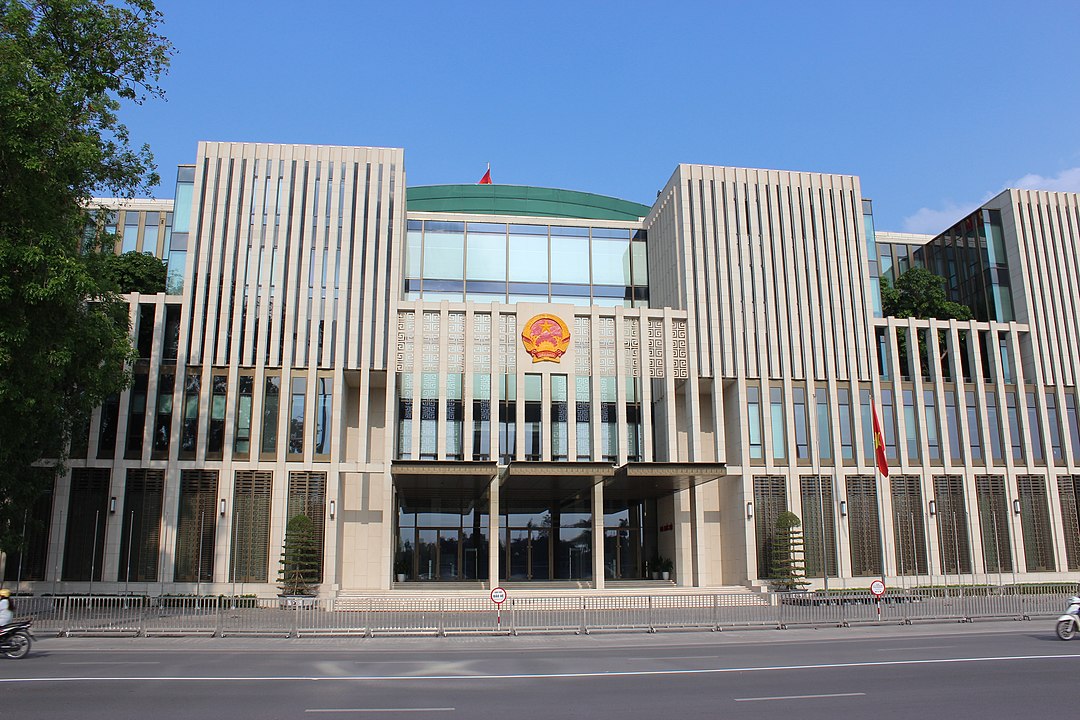 By Vu Thanh Minh
By Vu Thanh Minh
Why should a credit institution under special control be restructured?
The Global Financial Crisis caused the collapse of many financial and banking institutions and, without tracing every step in the economic domino theory, adversely affecting the system of Vietnamese credit institutions. By the end of 2011 the Vietnamese market saw stressful liquidity; a large number of credit institutions were unable to pay debts, leading to a high risk of insolvency, damaging the system and destabilising the financial market; the competition for capital mobilisation among credit institutions became intense and unhealthy; the credit ratio on capital mobilisation reached as high as 103,07 percent[1]. In light of such adverse circumstances, an urgent goal was set: the restructure and reorganisation of poor performing credit institutions and dealing with bad debts to ensure adequate and safe operation of the whole system.
Under the Credit Institutions Law[2], a credit institution can be considered under special control if “it is unable to make payments or pay its debts under the regulations of the State Bank; or the accumulated loss of the institution is greater than 50 percent of the authorised capital and reserve funds recorded in the latest audited financial statement, or it fails to maintain the minimum capital adequacy ratio of 8 percent or higher as prescribed by the State Bank in each period of 12 months consecutively, or the capital adequacy ratio lower than 4 percent in six months consecutively; or its ranking has been poor in two years consecutively according to the State Bank’s regulations”[3]. Under special control the credit institution will be directly controlled by the State Bank. Restructuring plans of credit institutions under special control include: recovery plan; plan for merger, consolidation, and transfer of all shares and contributed capital; dissolution plan; compulsory transfer plan; and bankruptcy plan. These restructuring plans are designed to provide security to the credit system and to fix the underlying problems facing the credit institution under special control.
Restructuring and investors participation in restructuring
After the review and classification of the State Bank, the number of small and weak credit institutions has gradually decreased since the end of 2011, the number of credit institutions eliminated from the system is about 22 organisations including seven domestic commercial banks, three joint-venture banks, four non-bank credit institutions and eight foreign bank branches[4]. Poor-performing credit institutions continue to exist, however, and they are subject to either compulsory acquisition by the State Bank (3 commercial banks) or special control (1 non-bank credit institution). The rate of bad debts and non-profit assets of these credit institutions is high. The management of overdue debts and the recovery of unprofitable assets have encountered numerous difficulties and have not yet achieved any significant result.
Article 148b of the Credit Institutions Law provides several measures to implement recovery plans such as selling bad debts with or without collateral to the Asset Management Company Ltd of Vietnam Credit Institutions (VAMC); applying for special loans from the State Bank, Vietnam Deposit Insurance (Professional reserve fund), Vietnam Cooperative Bank (Fund to ensure the safety of people’s credit fund system) and other credit institutions; purchasing and investing in information technology systems that exceed 50 percent of the charter capital and the charter capital reserve funds, etc.
According to the State Bank’s assessment[5], because of the limited budget which is insufficient to reconstruct weak financial institutions, the State Bank and supportive bodies[6], as directed by the State Bank, will focus on providing short-term capital (though this can be extended)[7].
To create options. on July 19, 2017, the Prime Minister issued Decision No. 1058/ QD-TTg approving the project “Restructuring the system of credit institutions associated with handling bad debts in the 2016 — 2020 period”, a centreed solution to encourage the engagement of domestic and foreign investors[8]. Investors cannot grant special loans like the State Bank and other domestic organisations, but they can buy shares and thus contribute capital to the controlled credit institutions. Participation of investors is seen as long-term and includes value-adding participation in the management and administration of credit institutions through representatives at management agencies of the credit institutions such as the General Meeting of Shareholders, Board of Members, Board of Directors, Board of Management, Board of Supervisors. A necessary financial resource like this should be promoted to support the restructuring of credit institutions in Vietnam.
Recommendations to complete the law provisions on restructuring
The first issue involves the time of submission of the plan to transfer 100 percent of shares and contributed capital of the controlled credit institutions with the capital of state-owned enterprises to the Prime Minister. The question is such a plan must be submitted to the Prime Minister for approval before or after the process of auctioning the capital share of state-owned enterprises. Currently, certain controlled credit institutions still retain capital of state-owned enterprises, especially non-bank credit institutions (formerly companies under the State-owned enterprises acting as an investment unit within the parent company such as arranging loans, managing cash resources and cash situation, managing investments of unused amounts for internal subsidiaries[9]). If the entire charter capital of controlled credit institutions is transferred, the capital share of the State-owned enterprises must remain in compliance with the regulations on state capital management. However, there is no established link between the provisions of the Credit Institutions Law and the Law on Management and Use of State Capital. Therefore, investors taking part in the transfer of capital of controlled credit institutions might not formulate a specific plan for the process of transferring the entire charter capital.
According to Article 149 and Article 149(b) of the Credit Institutions Law, when the credit institutions draft a plan of transferring charter capital, it must identify the expected receivers of the shares and contributed capital. According to Article 29(a) of Decree 32/2018/ND-CP[10], the public auction must be held when transferring capital at a listed joint-stock company or registering for transactions on the securities market but not for those companies not on stock exchanges yet or unlisted joint-stock companies or limited liability companies. The auctions process does not aim to identify the expected investor. The purpose, in fact, is to officially transfer ownership of shares and capital contributed by state enterprises to winning investors. Before the transfer plan is approved by the Prime Minister, the official transfer is prohibited, which means that state-owned enterprises are not allowed to auction. But if there is no auction, there will be no information about the investor to submit to the Prime Minister in the transfer plan.
These regulations should be more clearly stated in (i) the Credit Institutions Law, namely that after the decision of the Prime Minister to approve the transfer of 100 percent of the charter capital, shareholders and members who are State enterprises may conduct auctions to select investors to receive transfers; and (ii) Decree 32/2018/ND-CP, where it is necessary to include the provision that after winning the auction but before the plan to transfer all shares and contributed capital of the controlled credit institution is approved by the Prime Minister, the investor is not required to pay for the sale of shares or contributed capital to the State enterprises or will be refunded (including deposit) in case of payment, and the number of shares unpaid or paid but then refunded are still owned by the State enterprises.
The second issue involves what happens to the status of special control of a credit institution after the transfer of 100 percent of shares and contributed capital, specifically, whether the special control is considered to automatically terminate.Currently, the Credit Institutions Law does not mention automatic termination of special control after the transfer of shares and contributed capital. The law only provides that the plan to improve the situation of controlled credit institutions must be included in the proposal of transferring shares and contributed capital submitted to the Prime Minister.
Under the current regulations, even for charter capital transfers to new investors, the special control imposed on the credit institution will not be removed. Although a transfer transaction has been completed, the risks to investors do not change upon completion of the transfer as the institution is still under special control. This prevents the institution from completing its restructuring and maintains the old structure, thus facing the Biblical difficulty of placing new wine into old bottles.
When 100 percent of charter capital is transferred, and the legal form is changed, parties of the transfer transaction and the controlled credit institutions are entitled to a period of time before and after submitting the application for approval of the restructure to improve the situation that led to the credit institutions being put into special control. After the transfer of the entire charter capital, the special control should cease to exist, which changes the quality and is consistent with the purpose of the reconstruction. If the credit institution is unable to improve the situation that led to the special control, the transfer will fail.
Therefore, the Credit Institutions Law should include additional mandatory requirements for credit institutions after transferring all shares and contributed capital, the real value of the charter capital must be at least equal to the legal capital. The transfer must ensure safety ratios as regulated and after the transfer the special control is automatically terminated.
REFERENCES
(1) Summary report on the implementation of the law on handling weak credit institutions and dealing with bad debts (First draft on February 7, 2017).
(2) The difficulty of the State Bank of Viet Nam in dealing with weak credit institutions – Kình Dương ;
(3) Finance Company — then & now — Thanh Thủy;
(4) A scheme on restructuring the system of credit institutions associated with handling bad debts in the 2016-2020 period, issued together with Decision 1058 / QD-TTg on July 19, 2017;
(5) Report on impact evaluation of the project proposal of the Law on Supporting the Restructuring of Credit Institutions and Bad Debt Settlement (The first draft dated February 8, 2017, by the State Bank).
Email: minh.vu@lntpartners.com
[1] In 2011, according to the Summary Report on the implementation of the law on handling weak credit institutions and handling bad debts (The first draft on February 7, 2017, of the State Bank of Viet Nam)
[2] Article 130, 145 of the Law on Credit Institutions 2010, amended and supplemented in 2017
[3] Article 4.34 of the Law on Credit Institutions 2010, amended and supplemented in 2017
[4] Report on impact evaluation of the project proposal of the Law on Supporting the Restructuring of Credit Institutions and Bad Debt Settlement (First Draft on February 8, 2017, by the State Bank)
[5] The difficulty of the State Bank of Viet Nam in dealing with weak credit institutions
[6] Deposit Insurance of Vietnam, Vietnam Cooperative Bank
[7] According to Article 10 of Circular 01/2018 / TT-NHNN, the period of special loans in case the State Bank lends or decides to lend up to 2 years, with the maximum extension of 2 years at a time
[8] Section A (II) Scheme on restructuring the system of credit institutions associated with dealing with bad debts for the 2016-2020 period, issued together with Decision 1058 / QD-TTg dated July 19, 2017
[9] Finance Company – then & now – Thanh Thủy
[10] Decree 32/2018/ND-CP dated March 08, 2018, amending and supplementing several articles of Decree 91/2015/ND-CP dated October 13, 2015 on state capital investment in enterprises, use and management of capital and assets in enterprises














 LNT & Partners
LNT & Partners




